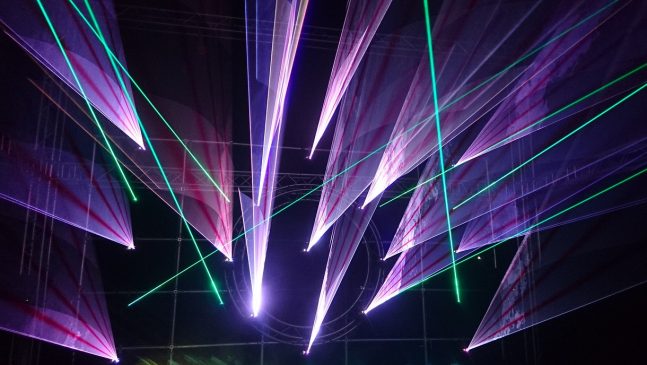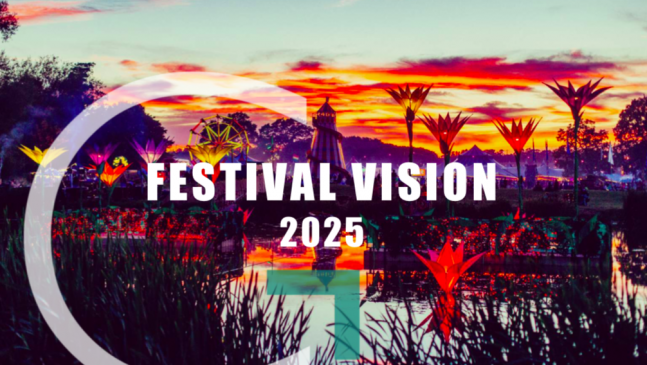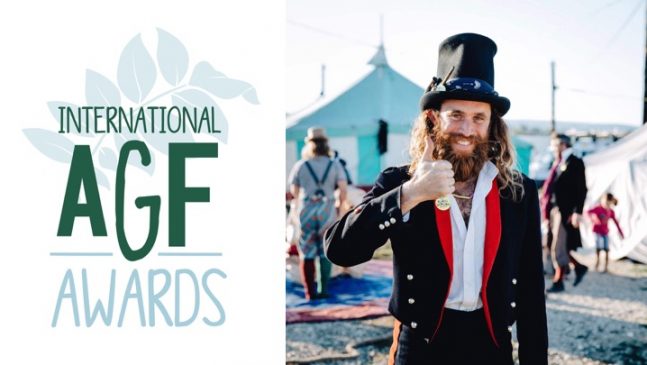Greenbelt is a weekend festival of ‘arts, faith and justice’ that has been running since 1974. The team has strong commitment to creating an environmentally sustainable festival – and have taken the Festival Vision:2025 pledge to cut their environmental impacts by 50% by 2025. In this blog Mary Corfield, sustainability lead for the event, talks about their mission to tackle festival waste – a journey that started with the crucial question: Where does it all end up?
Building a festival is a wonderful thing, but the process of turning green fields into a beautiful site and then back again involves stuff, lots and lots of stuff. Then the festival ends and everyone goes home…leaving the stuff behind.
The key moment for us at Greenbelt came when we started asking the right question: Where does it all end up? It is a big question, and if you ask it post festival when faced with mountains of things, it might seem overwhelming. You have to ask it at the beginning, before you buy things, because it radically alters what you buy, where from, how you engage with the traders and caterers on your site, your crew and even your festival goers. Ask it and keep asking it. It makes all the difference, as hopefully some of the examples below will show…
Re-usable pint glasses: We made the decision for our bars to have re-usable pint cups several years ago. In 2019 20,000 of them went through our bars and then back to the supplier for re-use. Making this switch has already saved us from using more than 100,000 disposable pint glasses.
Compostable Packaging:All our caterers are required to use only fully compostable packaging, whether plates, bowls, cups, stirrers or cutlery. This means festivalgoers can put it straight into our food waste bins when they’re done, whether they licked the plate clean or it is still half full of noodles.
Banning single use plastic bottles:Asking our caterers to switch to selling soft drinks in cans and upping the amount of free water refills around site radically reduced the amount of plastic waste at the festival. Our festivalgoers are now used to carrying refillable water bottles with them, a habit lots of them have carried on into their daily lives.
Eco-Glitter:Everyone loves to sparkle at a festival, but regular glitter is essentially just microplastic. Our Sparkle Squad use only eco-glitter, made from cellulose. Our festivalgoers shimmer just as brightly and in fact more of them pay for glitter now they know it is plastic free. Glitter beard anyone?
Waste Providers:The key to upping your recycling is working with your waste providers. We reduced the size of the holes on our bin toppers so that festivalgoers couldn’t just throw things in from a distance. That meant they were much more likely to read the bins and so put waste in the correct one, aiding recycling.
Bin Fairies: Our team of Bin Fairies are always on hand to help people be confident in which bin to use. We know for instance that festivalgoers often assume compostable cutlery must be plastic, so reminding them that it isn’t means much more of the compostable packaging ends up in the food waste bin, which is exactly where we want it to go.
Festival signage:Like most festivals we have different themes and artworks each year. However all our key event signs for places like car parks and campsite are made to last. They don’t have short-term logos on them and they are made of metal, designed to cope with whatever the UK weather throws at them.
Food Waste:Campers love the idea of cooking but get drawn in to using food vans instead, leaving lots of uneaten supplies in their tents. We collect it as they leave the campsite, donating it all to a local foodbank – several tonnes of it.
New for 2019, will be food waste collections from our traders! All unsold food supplies will be collected by The Real Junk Food Project, taken away and turned into meals for those who most need them.
Sofas:We have sofas in a few locations on site. We buy them in from a local charity shop, boosting their funds, and then donate them to another local charity who uses them for those in greatest need. It takes a little planning and coordination, and we always choose sofas that are easily cleaned in case of a wet festival, but it means we have comfortable furniture where we need it, at affordable prices, without waste.
Upcycle Vibing:We upcycle endlessly in our site vibing. Wood that is part of a stage set one year may be in a sculpture the next, the same with fabrics, lighting etc. Key to all of this is the team thinking about how they will remove it post event as they are installing it, so it can be stored away safely ready for the next transformation.
Carpets: Taking soggy carpets with muddy footprints on them and throwing them away post event has always been something we hated seeing. So, we’ve found a carpet recycling facility, and as our waste management teams head off site taking thing to the local recycling facility, they will also be delivering all of our carpets to be turned into a new product.
Check out the Festival Vision:2025 crowdfunder campaign to see how you can support the festival industry to come together around a vision of sustainable events – helping more organisers cut their environmental impacts and share best practices, resources and innovations: www.crowdfunder.co.uk/festivalvision2025










